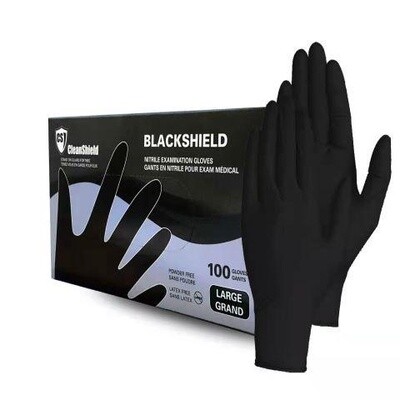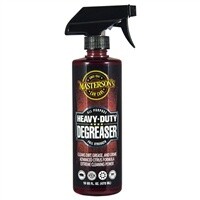ACA 520 FINISHING POLISH
3D ACA 520 Finishing Polish is the next evolution product performance and finish quality results for the fine-cut polish category in the body shop and car detailing industry.
Our 3D AAT 502 Finishing Polish was our first finishing polish introduced in 2018 and it’s good… really good. But just like everything in our world is continually changing, Tunch Goren, the owner and head chemist at 3D Products came up with an even better abrasive technology for a new compound, AAC 510 Premium Rubbing Compound and a new polish 3D ACA 520 Finishing Polish.
This new formula requires more time and more complex steps to create the raw materials and process them into the final powder – Alpha Ceramic Alumina or ACA. If you’re new to paint correction chemistry lingo – the word powder refers to the abrasive technology.
Besides the powder, the other important components that result in a compound or polish are the liquids. The liquids are just as important as the powder because it is the liquids that determine how well or how poorly the powder performs in different applications, such as for use with ha rotary polisher and/or for use with an orbital polisher.
After much experimenting with a brand new and very complex processing technology, once Tunch Goren perfected the powder and the accompanying liquids he then blended these two components together to create 3D AAC 510 Premium Rubbing Compound and 3D AAT 520 Finishing Polish. The new global tag-team of body shop safe compounds and polishes.
Like ALL 3D products, 3D AAT 520 Finishing Polish contains no harsh, harmful solvents nor any OSHA regulated crystalline silica. 3D AAT 520 Finishing Polish is the fastest polish in the industry for producing hologram-free results. This proprietary Alpha Ceramic Alumina powder and the water-based formula reduce heat during the buffing process, offers a super long open time or buffing cycle, zero dusting and easy wipe-off. If you demand the best, then get 3D AAT 520 Finishing Polish.
3D on the outside of the bottle means you can trust the product on the inside of the bottle.
What is it? - A body shop safe, silicone-free, water based premium quality fine-cut polish for use on automotive paints in in body shops environments. Can be used with any rotary or orbital polisher with foam pads.
What does it do? - Quickly removes holograms, fine swirls, fine toweling marks, shallow scratches, water spots and oxidation. Maximizes the distinction of image or D.O.I. appearance quality of a paint finish. Perfectly prepares the paint for wax, sealant, or ceramic coating.
When do you use it? - After first removing sanding marks with a 3D compound and/or after removing any serious or deep paint defects like swirls, scratches, water spots and oxidation.
Why use 3D ACA 520 Finishing Polish over other options? - The polishing step is the final step to perfect the paint. The results you create during all the steps are important but it’s the final polishing step where your product of choice has the chance to be the hero or the zero. Don’t be a zero… be the hero! Choose 3D AAT 520 Finishing Polish and the results you create will establish your reputation as a true professional in this industry and directly reflect your skill, knowledge, and talent.
3D AAT 520 Finishing Polish consistently delivers customer pleasing results sure to impress everyone. Did I mention it also wipes off easy? The next time you’re shopping for a better polish, make your job easy – choose 3D AAT 520 Finishing Polish.
- FASTEST fine-cut polish removes holograms, fines swirls and scratches.
- More correction, more speed and same finish results as 3D AAT 502 Finishing Polish.
- Precision engineered proprietary Alpha Ceramic Alumina, (ACA) abrasive technology.
- Chemically tuned for both hard and soft paints.
- Finishes out hologram free with rotary polisher and soft foam finishing pad.
- Works with both rotary and orbital polishers plus foam, microfiber, or wool pads.
- Body shop safe – Fresh paint safe – Silicone free!
- Does NOT contain OSHA regulated Crystalline Silica! - HUMAN SAFE
- Water-based – No harsh solvents or foul odors!
- Wipes off easy! – Won’t clogbuffing pads –– Competitive pricing.
- 3D’s Green Earth Technology – Biodegradable, Prop 65 and V.O.C. compliant.
Directions
IMPORTANT: Always work on a cool clean surface in the shade.
Body Shops – Using a rotary polisher
Step 1: First perform compounding to remove sanding marks and/or serious paint defects before polishing.
Step 2: Attach preferred foam polishing or finishing pad to backing plate on rotary polisher and set speed setting to low or medium.
Step 3: Apply 4-5 dime sized drops of product onto the center of the face of buffing pad. Press the face of the pad against a body panel, turn the polisher on and spread the product over the area to be worked, about 2’ by 2’.
Step 4: After spreading polish over area to be worked - turn polisher to a medium to high speed and begin making overlapping passes. Move polisher over paint using a slow to medium arm speed. Monitor defect removal as you buff. Once paint defects are removed to your satisfaction, stop buffing and remove any excess product using a clean, soft microfiber towel.
Detail Shops/Enthusiasts – Using an orbital polisher
Step 1: Prepare the surface by first washing, drying, and removing any above surface bonded contaminants using detailing clay or a clay substitute. If there are serious paint defects like deep swirls, scratches, water spots or heavy oxidation – use a 3D compound as your first step.
Step 2: Attach preferred foam polishing or finishing pad to backing plate on orbital polisher and set speed setting to low or medium.
Step 3: Apply 4-5 dime sized drops of product onto the center of the face of buffing pad. Press the face of the pad against a body panel, turn the polisher on and spread the product over the area to be worked, about 2’ by 2’.
Step 4: After spreading polish over area to be worked - turn polisher to a medium to high speed and begin making overlapping passes. Move polisher over paint using a slow to medium arm speed. Monitor defect removal as you buff. Once paint defects are removed to your satisfaction, stop buffing and remove any excess product using a clean, soft microfiber towel.






